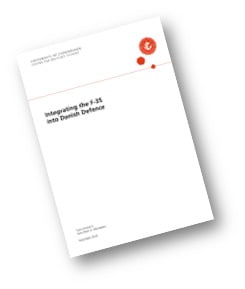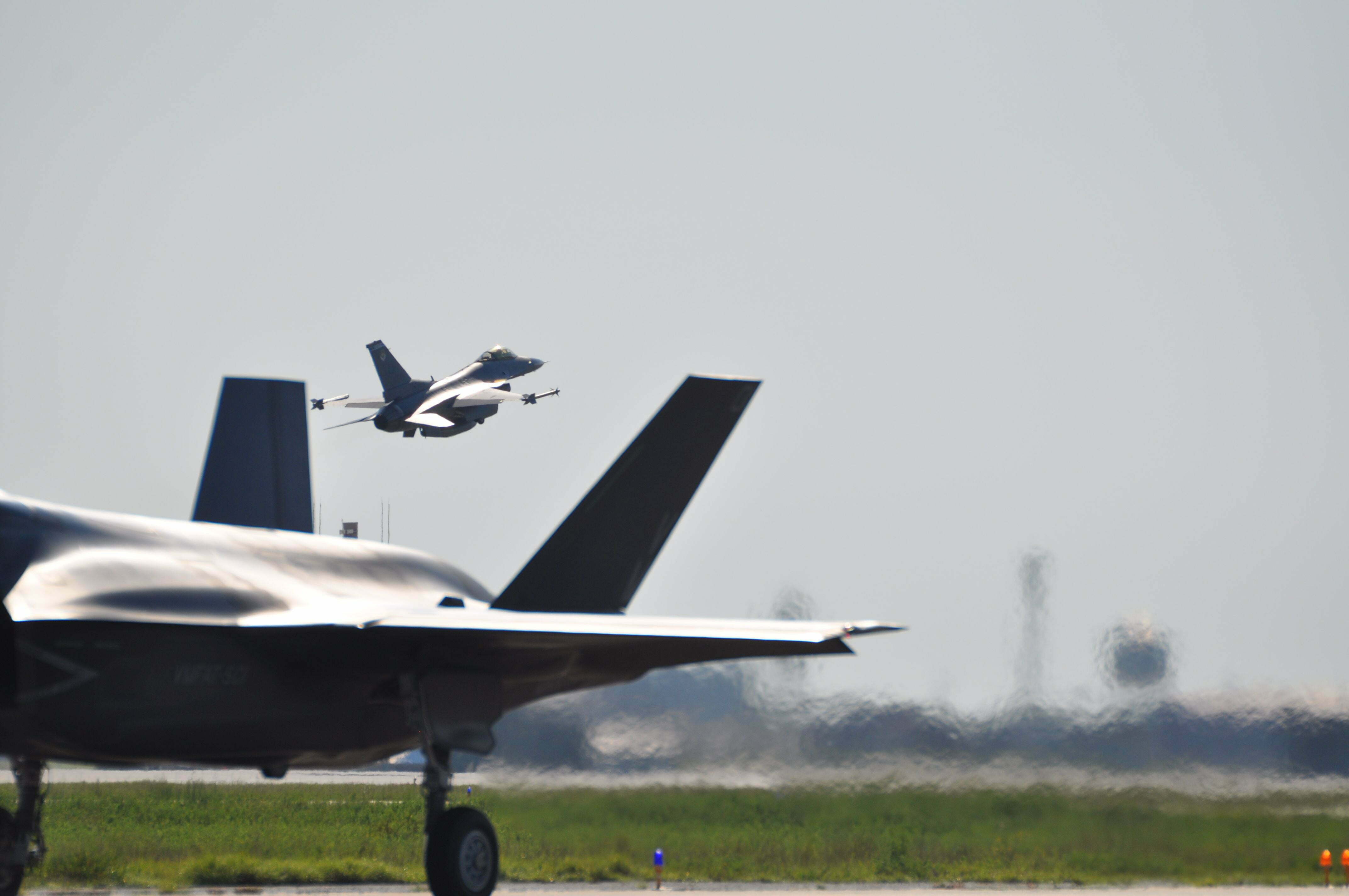Acquiring new combat aircraft is a big deal.
The combat aircraft fleets of most Western countries are nearing the end of their useful service life and therefore must be replaced.
Such acquisition programs have been among the most expensive ever pursued and have therefore been subject to significant political, military, public scrutiny.
Absent scandals of large deviations from the expected price and delivery schedule, intense scrutiny generally ends once the announcement has been made and the normal administrative tasks of implementation begin.
These tasks are many and include:
- Having hangar and maintenance facilities ready to receive the aircraft
- Being able to protect the aircraft from a full spectrum of threats on the ground at home as well as in deployed situations
- Having sufficient numbers of pilots and maintenance personnel to actually use the aircraft
- Integrating them with existing air force roles and missions
- Establishing their role as part of a joint force
- Pursuing interoperability with NATO and coalition partners
- Developing new service, joint, and combined roles and missions given new capabilities inherent in the aircraft
- Establishing and deepening multinational training and sustainment possibilities
- And considering the possibilities that the new capabilities open for defence policy writ large.
In June 2016, the Danish Parliament approved the procurement of 27 F-35 fighter aircraft to replace the Royal Danish Air Force’s remaining fleet of 30 operational F-16s.
They will be delivered between 2021 and 2026.
The Danes will have to address the challenges of integrating these new aircraft during these years if the capability promised in the largest defence procurement in their history is to be realized.
How can they do so?
The Centre for Military Studies at the University of Copenhagen has just released a 71-page report that I and my colleague, Major Hans Peter Michaelsen, have written to address these challenges.
The report is intended to provide a guide to these issues for Danish decision makers and interested parties that provide oversight within the Danish system, such as the Parliament and the attentive media, as well as suggest courses of action to address these challenges.
We group these challenges into three: (a) aircraft, personnel, & facilities; (b) service, joint, and combined integration; and (c) defense policy implications.
We provide the following guidance.
Aircraft, Personnel, & Facilities
Aircraft
- Finances trumped requirements in Denmark’s F-35 acquisition. Thus, additional aircraft may be required in the future.
- Denmark’s F-16 fleet has limited flight hours remaining and potential demands from operations and the training and exercises inherent in the transition to the F-35 may stress the fleet beyond its remaining useful service life.
- Thus, contingencies to remedy potential shortfalls, such as leasing F-16 flight hours or aircraft from European Partner Air Forces, should be considered—or Danish political leaders should be prepared to face a longer capability gap than already planned.
Personnel
- Pilot and maintainer shortages have challenged the Royal Danish Air Force (RDAF). A continued focus on efficiency rather than resilience risks perpetuating these shortages. Thus, increases in these personnel accounts are likely warranted and could provide an opportunity to more quickly meet NATO’s 2 percent goal.
- The F-16 pilot cadre is the most experienced in Danish history. Thus, RDAF personnelists should consider methods to retain very experienced pilots as US-based instructors beyond their active duty flying age limit and populate the new F-35 squadron with experienced F-16 pilots with sufficient active duty flying time remaining to the extent possible.
- Maintenance personnel challenges will increase during the transition phase to the F-35. Thus, substantial efforts to recruit and train a new generation of technicians will be required.
- It will take 10 years to adequately train 300 flight engineers and maintenance technicians. Full operational capability is planned for 2026—eight years from now. Thus, maintenance training throughput should be maximized.
- F-35 maintenance and sustainment will be deeply multinational. Thus, maintenance structures, processes, and labour agreements will require adjustment.
Facilities
- Initial plans for facility construction and refurbishment at Skrydstrup Air Base have already encountered problems and significant cost increases. These have delayed the expected delivery of F-35s into Denmark by at least 6 months. Thus, expediting construction should be considered to avoid further delays and, perhaps, make up for lost time.
- The F-35 and its facilities will be prime targets for adversary espionage. Thus, a thorough risk assessment of the physical, electromagnetic, and cybersecurity measures planned for F-35 storage and information at Skrydstrup beyond that required by the F-35 Joint Program Office should be considered.
- The Russian exclave of Kaliningrad poses significant anti-access/area denial (A2AD) challenges in any Baltic Sea scenario. Skrydstrup is beyond the reported range of Russian ground-based missiles and will be the closest F-35 base to the Baltic states. It may serve as a forward operating base for air operations in the Baltic Sea region and therefore requirements for facilities and defences may extend beyond those required only for national operations in peacetime.
Service, Joint, and Combined Integration
- The capabilities of the F-35 will require additional training in new roles and missions for RDAF pilots.Further, future concepts of operation that profit from those capabilities will require participation in additional, large-scale exercises to master. Thus, the RDAF should consider increasing its planned participation in Red Flag exercises with its F-16 force to develop pilot competencies in high intensity, multinational air contingencies with other nations’ 5thgeneration aircraft.
- Future F-35 operational concepts will likely entail integrating sensors and shooters from multiple platforms, across domains, and with different types of capabilities. These concepts will be developed by all partner nations alone and in cooperation. Thus, future F-35 command and control (C2) arrangements together with other European F-35 user nations should be discussed in depth to ensure the agile, flexible, and effective employment of the F-35 aircraft in multinational operations.
- The joint nature of the F-35 and the initiatives of multiple partner nations to integrate air and maritime capabilities will require consideration of future Danish maritime communications, sensors, command and control, and concepts to coordinate the firing of munitions.
Defence Policy Implications
- The North Sea area rests between four F-35 partner nations: The United Kingdom, the Netherlands, Norway, and Denmark.Thus, developing a regional exercise area over the area’s less restrictive airspace provides an opportunity for Denmark to take the lead in one area of F-35 integration efforts.
- Such an area would also provide a venue for Danish participation in multinational exercises involving air and maritime integration with forces from the UK and Norway.
- Denmark will consider the acquisition of a strike capability during the next five years. While previous discussion has centered on maritime strike capabilities, such as the Tomahawksea-launched cruise missile, airborne options such as the Norwegian-developed air-launched Joint Strike Missile should be included.
- Finally, F-16 acquisition and upgrading to support all-weather precision strike enabled Danish leaders to participate in a wide variety of expeditionary operations over the past two decades.The F-35 will likely increase prospects for Danish activism in a similar fashion. Danish leaders should thus begin to consider these possibilities relative to their levels of ambition, resource constraints, and political will.
Our report, Integrating the F-35 into Danish Defence, examines these issues in some depth and is intended to frame discussion of them for some time to come.

It can be downloaded here—as can two companion documents in Danish: a short 4 page CMS Memo “Integration af F-35-Kampflyet I det dansk forsvar” and a graphics-laden short primer on the F-35, the Joint Strike Fighter Program, and the expected transition from the F-16, “Danmarks nye kampfly – F-35 kort fortalt.
Gary Schaub, Jr. is a Senior Researcher within the Centre for Military Studies of the University of Copenhagen.
The Centre is a strategic partner of Second Line of Defense and defense.info.
The featured photo shows an F-16 taking off to accompany the F-35 at Eglin AFB. Credit: Major Roganov, while she was the PAO for Team Eglin.
CMS_Report_2018__5_-_Integrating_the_F-35_into_Danish_Defence

